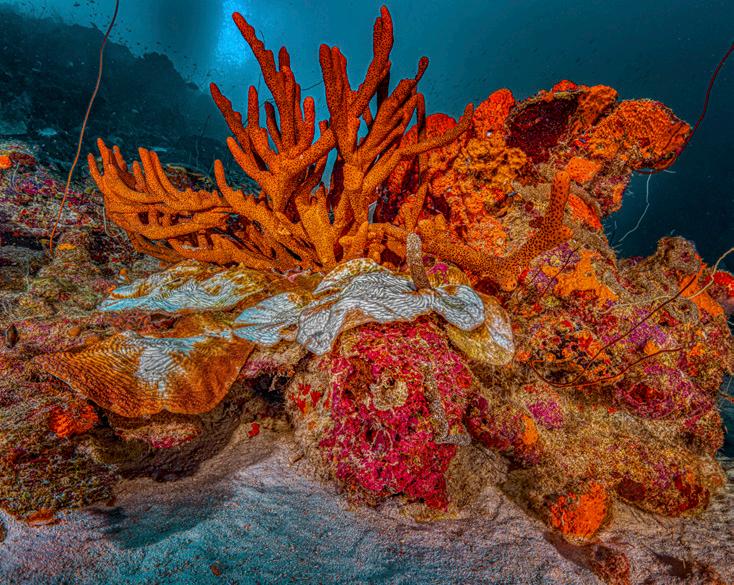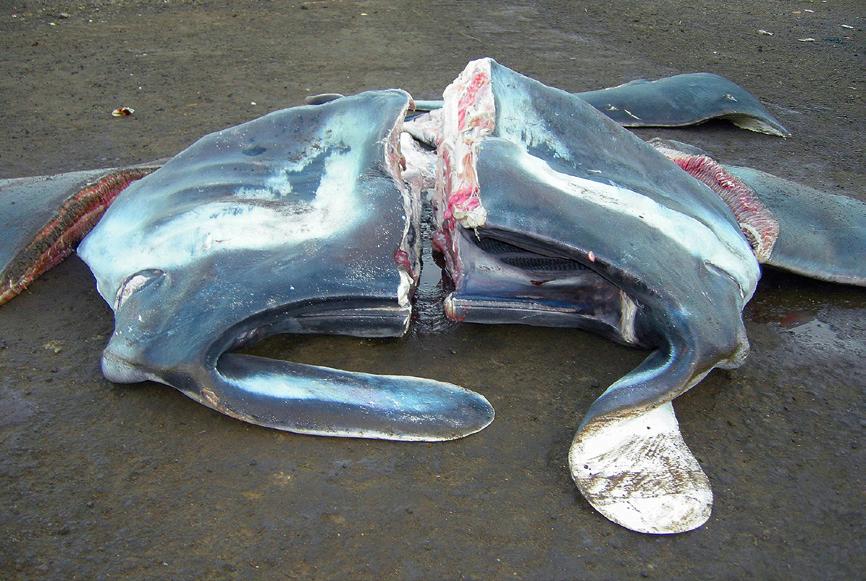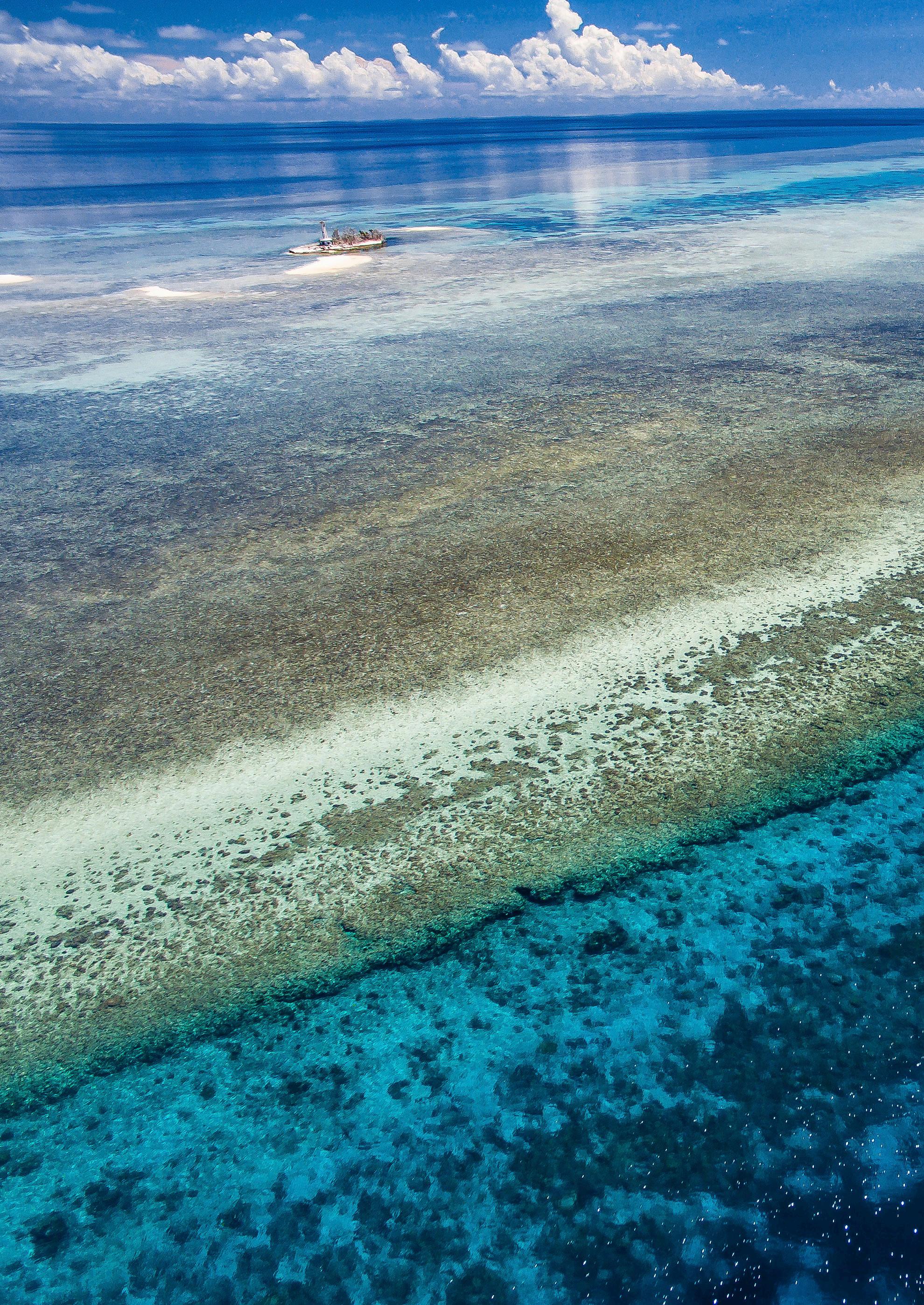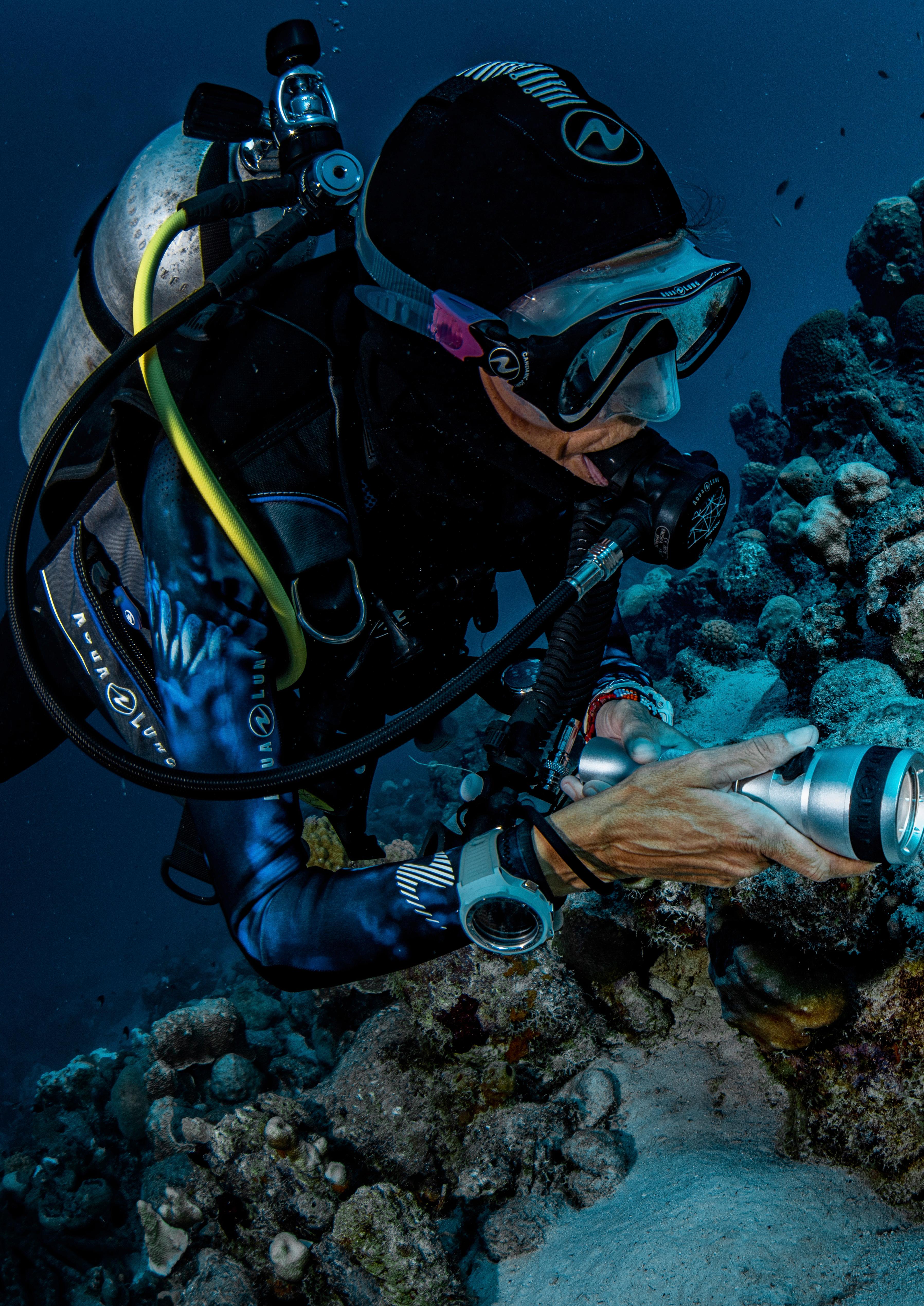
4 minute read
Coral Bleaching
FEATURE AND PHOTOGRAPHY LORENZO MITTIGA
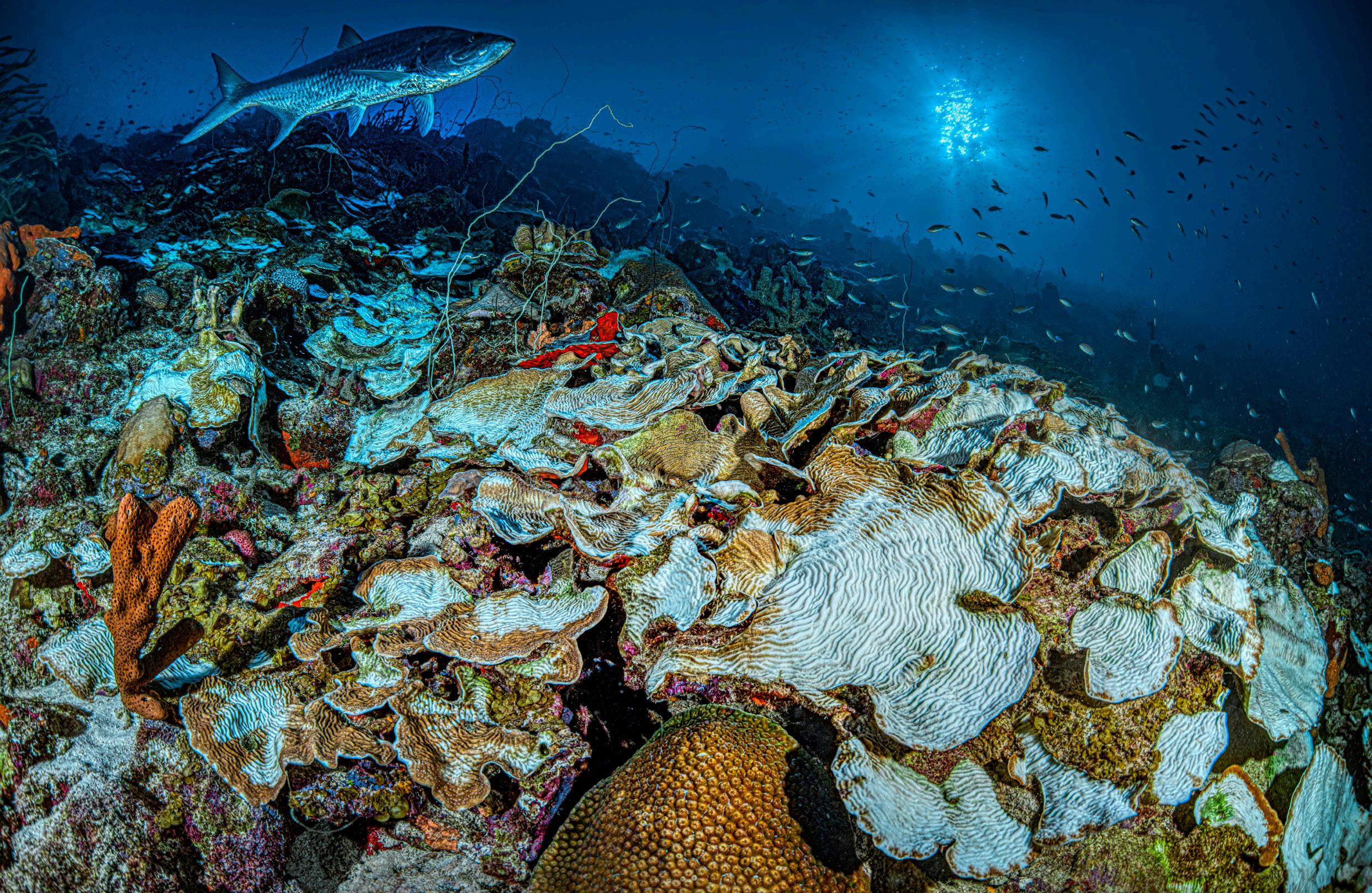
Advertisement
OCEAN CONSERVATION FACTS
Reef bleaching events now have a recurrence interval approximately every six years, while reef recovery rates are known to exceed every ten years. This means that, on average, reefs will not have sufficient time to recover between bleaching events and so a steady downward spiral in reef health is to be expected over the next foreseeable decades.

SUSTAINABLE DEVELOPMENT GOALS ON THE UNEP 2019 WORLD REPORT
The oceans SDG target for 2020 was to sustainably manage and protect marine and coastal ecosystems to avoid significant adverse impacts. This included strengthening their resilience and to take action in their restoration stage in order to achieve healthy and productive oceans. The results have yet to be released. Mass coral bleaching events (some on a global scale) have been occurring more and more frequently over the past 30 years. A large number of coral reef areas in the United States and internationally have experienced severe bleaching, some during back-to-back events.
Heat stresses have started up again after the last global coral bleaching event in 2014 which has affected coral reefs in the Caribbean from late October 2020 and is predicted to last through to May 2021.

THE SITUATION IN THE CARIBBEAN
The Caribbean has remained hot since June last year, particularly the southern Caribbean where heat stresses were predicted to persist through to December presenting a worry for the health of coral reefs throughout the region. A bleaching alert has been raised of Level 2 conditions throughout the Leeward Antilles (ABC island), Trinidad, Tobago, and Belize.
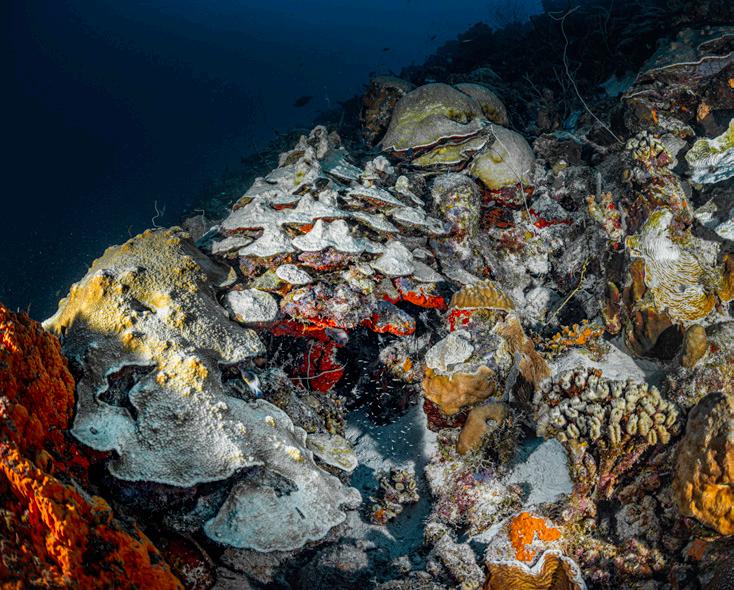
ON BONAIRE
Bonaire’s Marine Park is presently experiencing a mass coral bleaching event. The alert Level 2 raised in December, according to NOAA, has gone back to a ‘Watch Alert’, but the reef still remains deeply affected by the heatwave. The reef will eventually recover from the studies being made, but it will take time – provided that no other heatwaves will occur within the next year. That could be fatal for the reef.
Global climate change is one of the greatest threats to coral reefs today. Higher temperatures that result in heatwaves wreak havoc underwater. Warmer than normal temperatures stress the corals, most often resulting in coral bleaching. Unless the water cools down again soon, the end result of this bleaching event is likely to be mass coral mortality.
STINAPA (the Bonaire Marine park institution) is monitoring the situation and will keep updating the information. During this fragile stage, divers are asked to be extremely careful and to practice perfect buoyancy during their dives over the reef.
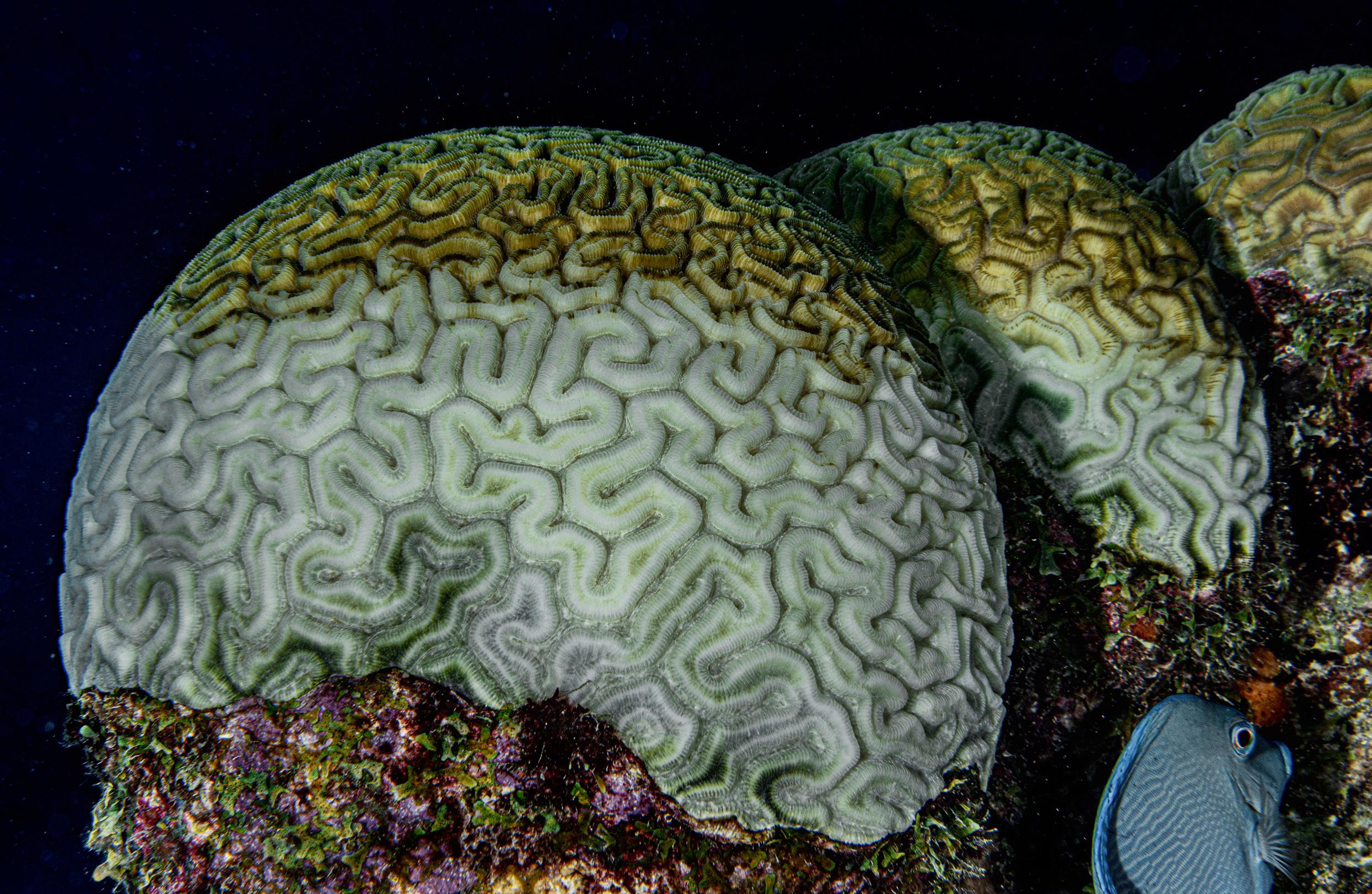
WHAT IS CORAL BLEACHING?
When corals are stressed by changes in conditions such as temperature, light, or nutrients, they expel the symbiotic algae living in their tissues causing them to turn completely white.
A warming planet means a warming ocean, and a change in water temperature – as little as 2 degrees Fahrenheit – can cause coral to drive out algae. Corals may bleach for many other reasons, such as extremely low tides, pollution, or too much sunlight.

CAN CORALS SURVIVE BLEACHING?
If the stress-caused is not severe and doesn’t last too long, corals have been known to recover. If the algae loss is prolonged and the stress continues, corals eventually die.
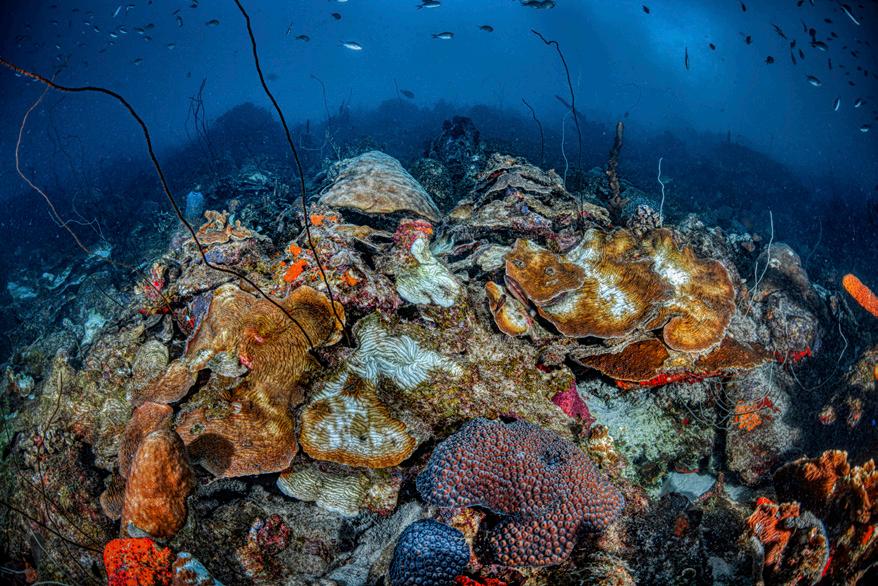
CORAL RESTORATION
As Bonaire’s reef is experiencing widespread bleaching at the moment, the Reef Renewal Foundation Bonaire (RRFB) staff, who are conducting the Coral Restoration Project (story published in the Divers for the Environment’s September 2020 issue), are closely monitoring the nurseries.
Fortunately, the staghorn and elkhorn corals in the nurseries are not showing any signs of stress, but a few of the boulder corals are. Some boulder coral genotypes are able to withstand the increase of water temperatures better than others, and some might be able to recover better than others. The collection of data is critical in order to conduct restoration efforts in the future.
Thankfully, the bleaching event has recently dropped down to a ‘Watch Alert’, and we are hopeful that the reefs and the boulder corals will make a full recovery over time. RRFB will keep you updated!
The hard corals found at deeper depths, between 17 m and 40 m are the ones who have been observed to be more stressed and affected by the temperature shifts. The shallower corals are more accustomed to withstand the wider ranges of water temperatures. The ‘white’ appears to be much more intense at depth.
